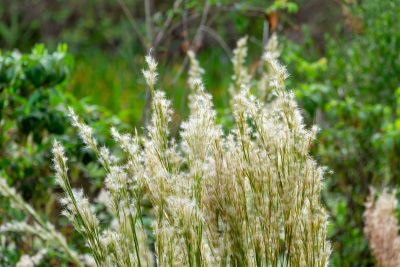What is Bushy Beardgrass?
Also known as bushy beardgreass, this is an attractive ornamental grass for areas that have damp to wet ground. Adding fall and winter color and interest, Glomeratus beardgrass, brightens areas that have gone drab with colder seasons. Showy copper-orange stems and plumes are long lasting, persisting through cold temperatures when adequate water is supplied. Bushy bluestem grass grows in most areas of the U.S. (zones 3-9), supplying beautiful color in a range of beds and borders and around streams and ponds. It’s great for naturalizing a landscape area, or for use in the back of a rain garden or around fountains. It may also be planted as a livestock feed and for erosion control on slopes and banks. Flattened blue stems, reaching 18 inches to 5 feet (46 cm. to 1.5 m.), display willowy plumes growing from the top third in late summer. Its narrow leaves are attached to sheaths that wrap around the stems. These leaves are bluish green before colder temperatures promote color change.
Growing Bushy Beardgrass
Start it from seed, planted lightly in the back of a prepared bed. Just one plant can release enough seeds for an entire border, although it is unlikely seeds will fall into the proper formation. When planting from seed, do so when ground is no longer frozen in spring and after the date of the last projected frost. Use it also as a decorative landscape plant for the back of a border. When growing for this use, keep weeds away from seeds and young seedlings, as they compete with the grass for nutrients and water. Keep growing seeds moist, but not soggy, until they have some growth. While bushy bluestem seed will tolerate in poor soils, the best initial growth is in moist soil. When growing as a landscape plant, mulch helps hold in moisture. Place the mulch about 3 inches (8 cm.) thick, but don’t let it touch the stems. This plant multiplies easily and after a few years will provide a swath of winter color. If you would like to limit the spread of this grass, you can remove the 3 inch (8 cm.) clusters of seed heads to eliminate unwanted multiplication.
